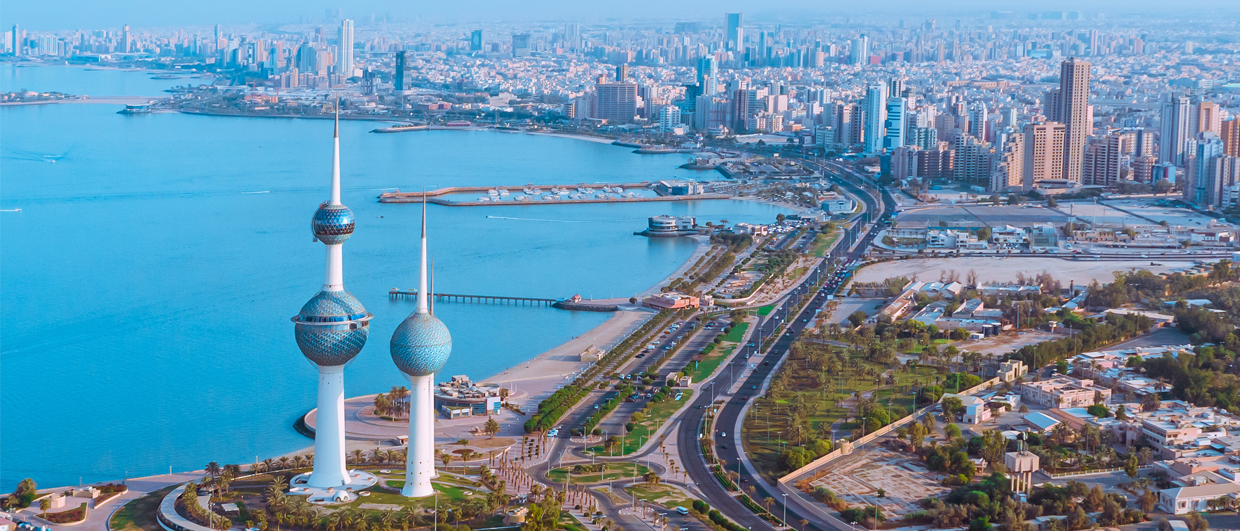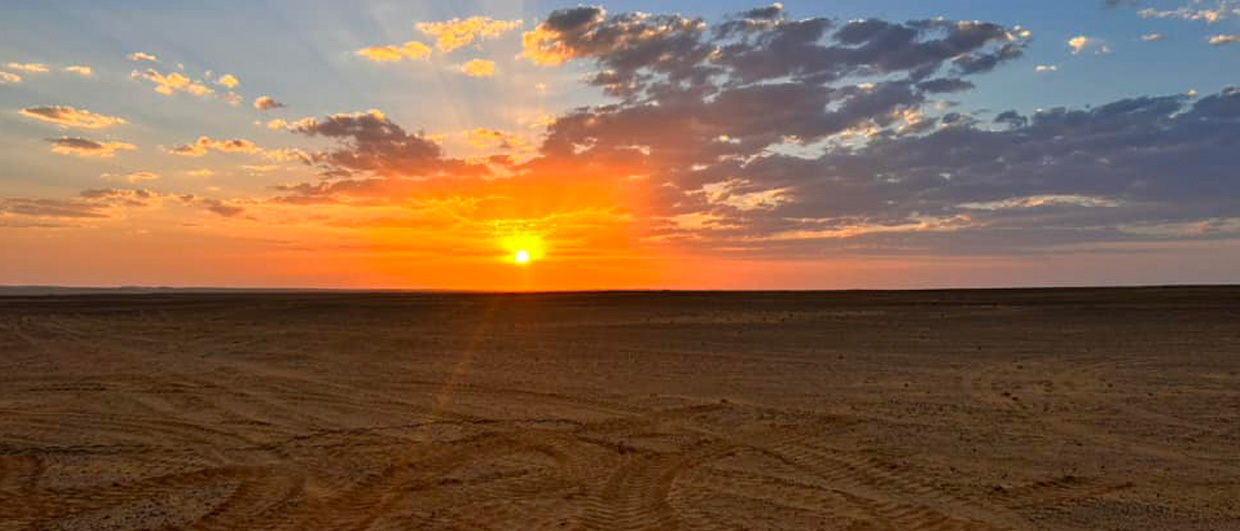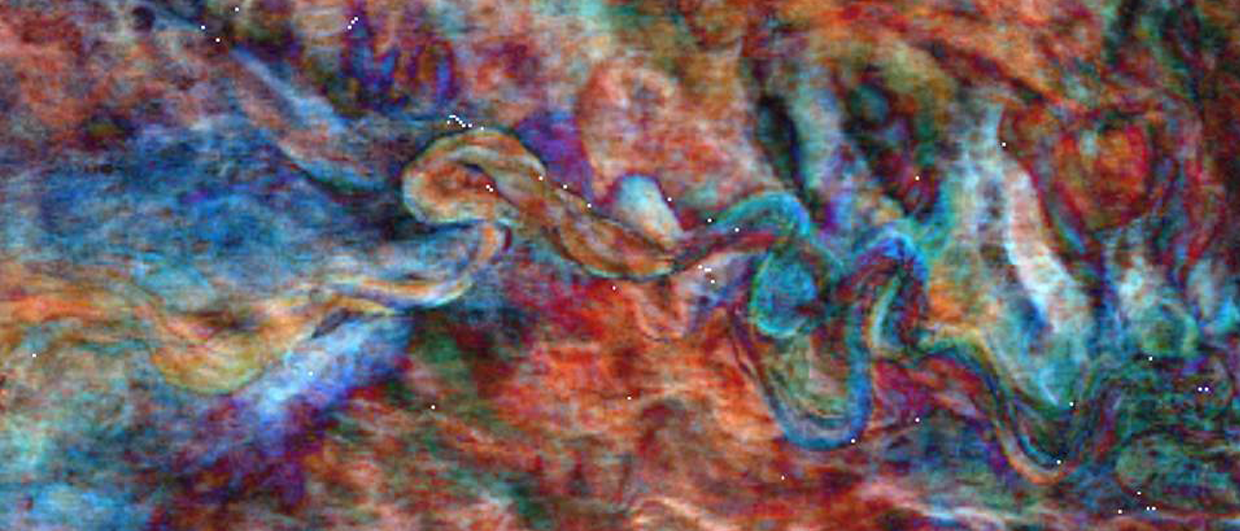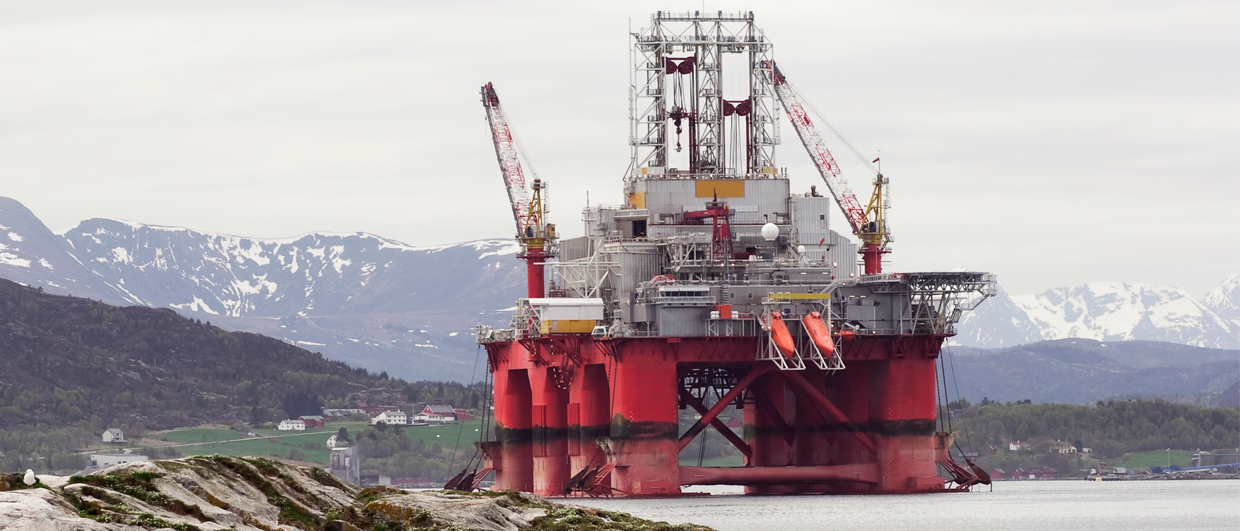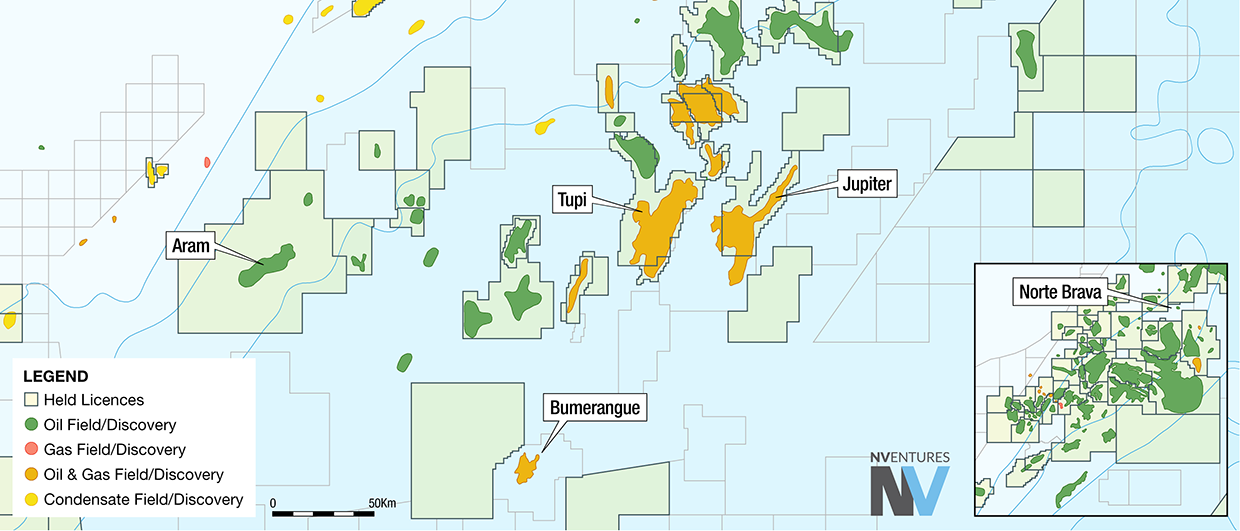In 1991, the US-led Operation Desert Storm drew the occupying Iraqi forces out of Kuwait. The retreating Iraqis set fire to over 700 Kuwaiti oil wells, half of which were in the Burgan field. The images of black smoke plumes extending high and wide are well known to the public. But there is more to Burgan’s story than that fiery year.
The Great Burgan field lies some 500 km north of Ghawar, the world’s largest oil field. Burgan ranks second, but since Ghawar is a carbonate field, Burgan is credited to be the world’s largest sandstone reservoir both in terms of reserves and production.

How Burgan Was Discovered
The discovery of the Burgan field dates back to the early twentieth century when Kuwait was in the domain of British influence. After the 1908 discovery of oil in Iran and subsequent formation of the Anglo-Persian Oil Company (APOC), British attention was drawn to the nearby land of Kuwait which was also rich in bitumen seeps. In 1912, a party of geologists commissioned by the British Admiralty visited the Burgan area, and one of the geologists from the Geological Survey of India, Edwin Pascoe, reported the existence at Burgan of a gently-dipping structural dome with bitumen seeps on the surface. In 1913, the Emir of Kuwait, Sheikh Mubarak bin Sabah, also wrote to the British Political Resident in Kuwait about the famed abundant seepages in Kuwait and the possibility of an oil concession for a British entity. APOC dispatched the geologist S. Lister James in 1914 and again in 1917 to survey the seepages in the villages of Bahrah and Burgan, located respectively north and south of Kuwait Bay. James recommended drilling at the sites but it took two decades of on-and-off negotiations before any well could be drilled.
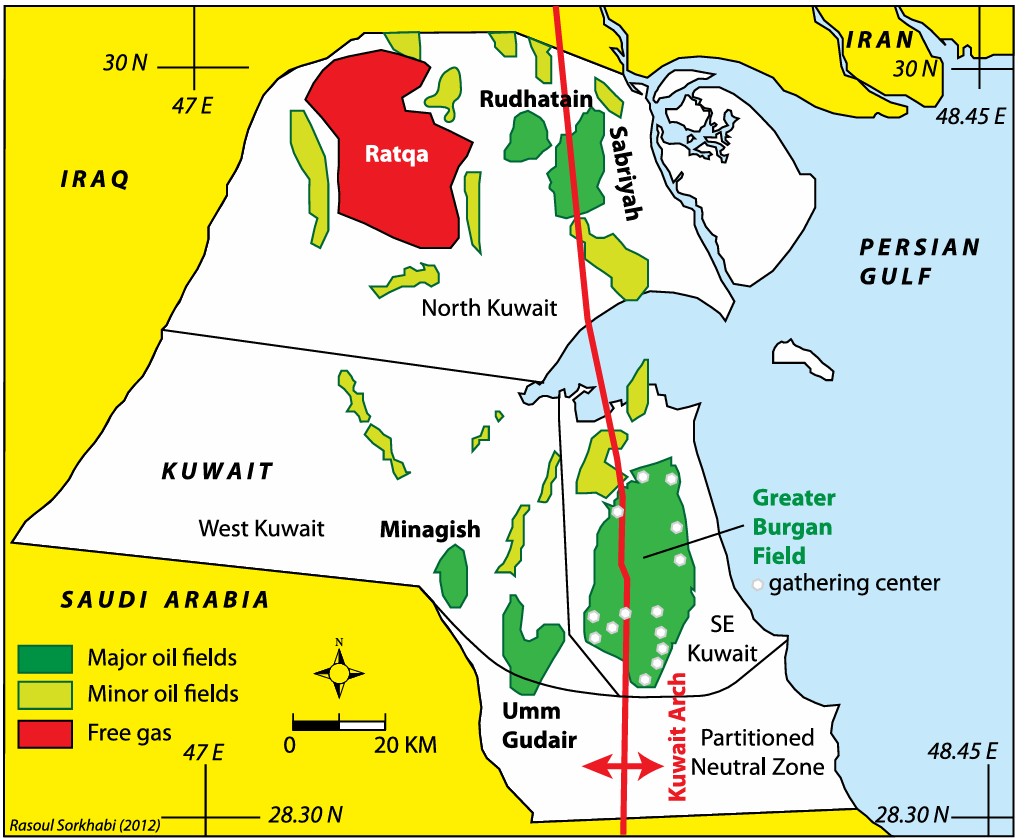
Major Frank Holmes, a New Zealander who had helped set up the Eastern and General Syndicate in London, was the moving spirit behind oil explorations on the Arabian Peninsula during the 1920s and 1930s; he even had an Arabic title, ‘Abu Naft’ (Father of Oil). In 1924-25, Holmes hired a Swiss geologist, Arnold Heim, to survey Kuwait and eastern Arabia, but Heim’s geological report was discouraging. Then, in 1925-26, APOC sent its geologists to Kuwait, and they also gave it a low ranking for oil prospects. In 1927, the American company Gulf Oil bought Holmes’ concessions (although Holmes still retained his job); this motivated APOC to enter the oil game in Kuwait afresh. For several years, both Gulf Oil and APOC held separate and competing negotiations with Sheikh Ahmad Al-Jaber al-Sabah of Kuwait, and the Emir was willing to play one side off against the other in order to get a better deal. Those were the days of the Great Depression: global demand for oil was low, and the rulers in the Persian Gulf region were in dire need of new revenues to offset the diminishing pearl industry. In 1933, APOC and Gulf Oil decided to put aside rivalry and act as a single entity. They registered a joint venture, the Kuwait Oil Company, in London, and offered a new deal to the Emir of Kuwait. In December 1934, Sheikh Ahmad al-Jaber signed an oil concession for the entire 16,000 km2 of Kuwait for a period of 75 years in return for royalty.
A team of geologists started working in Kuwait in the hot summer of 1935. They recommended drilling at Bahrah; but a 2,423m well into the Cretaceous sediments drilled during 1936-37 yielded minor oil shows only. Meanwhile, gravity, magnetic and seismic surveys were conducted in the Burgan area, and on 16 October 1936 Burgan No. 1 was spudded at a seepage. Sediments below 1,000m had oil shows, and finally, on 23 February 1938 the well hit a high-pressure sandstone unit at a depth of 1,120m. It was a gusher that at last put Kuwait on the world oil map. The reservoir was the Middle-Cretaceous Wara sandstone from which 32° API gravity oil flew at rates of over 4,000 bopd before the well was controlled with great difficulty and completed on May 14 at a depth of 1,126m (only 6m into the payzone because of logistic constraints). From 1938 to 1942, eight additional wells drilled in the Burgan field were all productive and yielded new payzones in the underlying Burgan Formation. However, World War II put an end to these operations.
In June 1946, a year after the War had ended, the Emir of Kuwait inaugurated the first shipment of Burgan’s crude from the Mena al-Ahmadi terminal, some 24 km east of Burgan. By the end of 1950, there were 99 productive wells in Burgan pumping 344,000 bopd. Also in 1950, oil was discovered at Magwa; two years later, a well hit oil at Ahmadi from the same Cretaceous sand units. In 1953, wells at Magwa and Ahmadi came on stream, and by 1955, production from the entire field stood at 1 million bopd. Both Magwa and Ahmadi are located on subsidiary domes of the mega-anticline on which the Burgan field is situated. These three structural culminations constitute the Great Burgan field with similar oil-water contacts at depth.
Structure and Stratigraphy
The Great Burgan field is located on the north-south trending Kuwait Arch, which according to George Carman (1996, GeoArabia, 1: 239-266) was a basement horst that was reactivated in the Late Jurassic during the break-up of Gondwana. The origin of the Burgan, Magwa and Ahmadi domes located on the Kuwait Arch have been ascribed to movements of the Infra-Cambrian Hormuz Salt at the base of the sedimentary succession (yet to be drilled); nevertheless, some geologists also consider the role of tectonic stresses that have affected this region in Mesozoic and Cenozoic times.
Burgan’s oil producing zones are six Cretaceous-age reservoirs: (1) Wara (topmost) including First and Second Sand (as initially called); (2) the Mauddud limestone; (3-5) The upper, middle and lower units of Third Sand of which the middle unit is a quartz-rich, multi-Darcy porous sand unit and has produced over 75% of the field’s oil; and (6) Fourth Sand (lowermost), which is also quartz-rich and porous. The Third and Fourth Sands belong to the Burgan Formation. This Albian-Cenomonian succession of sediments, about 410m, was deposited in near-shore, shallow water (deltaic, littoral to lagoonal) environments on the gently subsiding continental shelf of the Tethys Sea that once covered the northern margin of Gondwana. A detailed study of sedimentary facies in the Burgan field by Christian Strohmenger and her colleagues (AAPG Memoir 88, 2006) show that the sediments have stacks of low-stand, transgressive, and highstand sequence sets controlled by sea-level changes. The Cretaceous play is capped by the Ahmadi Shale on the top of the Wara Formation and is sourced probably from the organic rich shale units of the Lower Cretaceous at the base of Fourth Sand. The generation and migration of oil occurred during Miocene-Pliocene times.
A few attempts have been made to assess deeper plays in Burgan. A 1951 well penetrating the Berriasian-age Minagish Oolite Limestone in Burgan and a 1984 well drilled into a Jurassic carbonate at Magwa both hit oil. Two wells drilled in Burgan toward the end of 1979 penetrated the Khuf (Permian) carbonates at depths of 5,930m and 6,780m but did not discover commercial gas as expected.
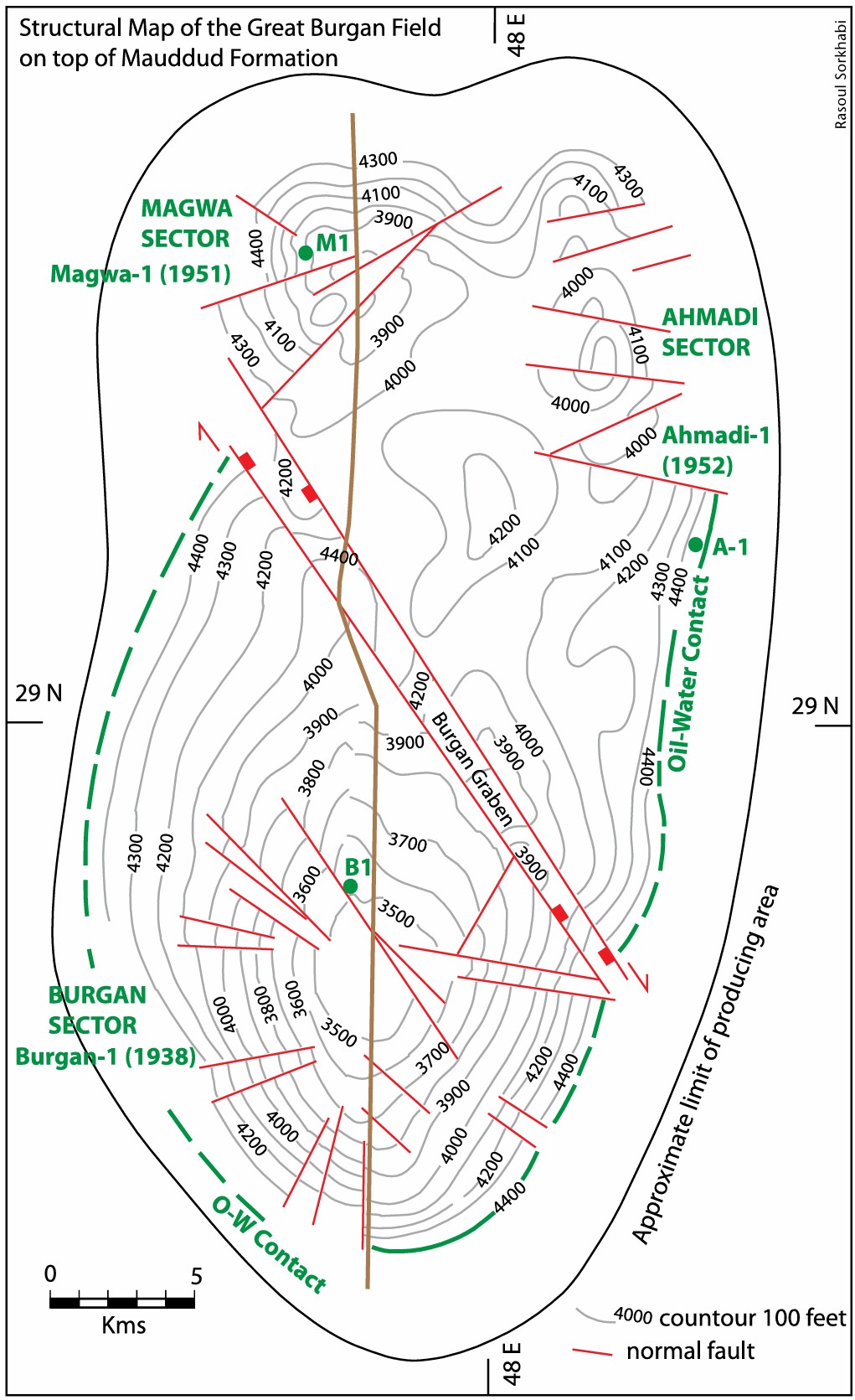
Reserves and Production
Like any other Middle Eastern oil field, the reserves and production data for Burgan are shrouded in a cloud of secrecy, uncertainty, and controversy.
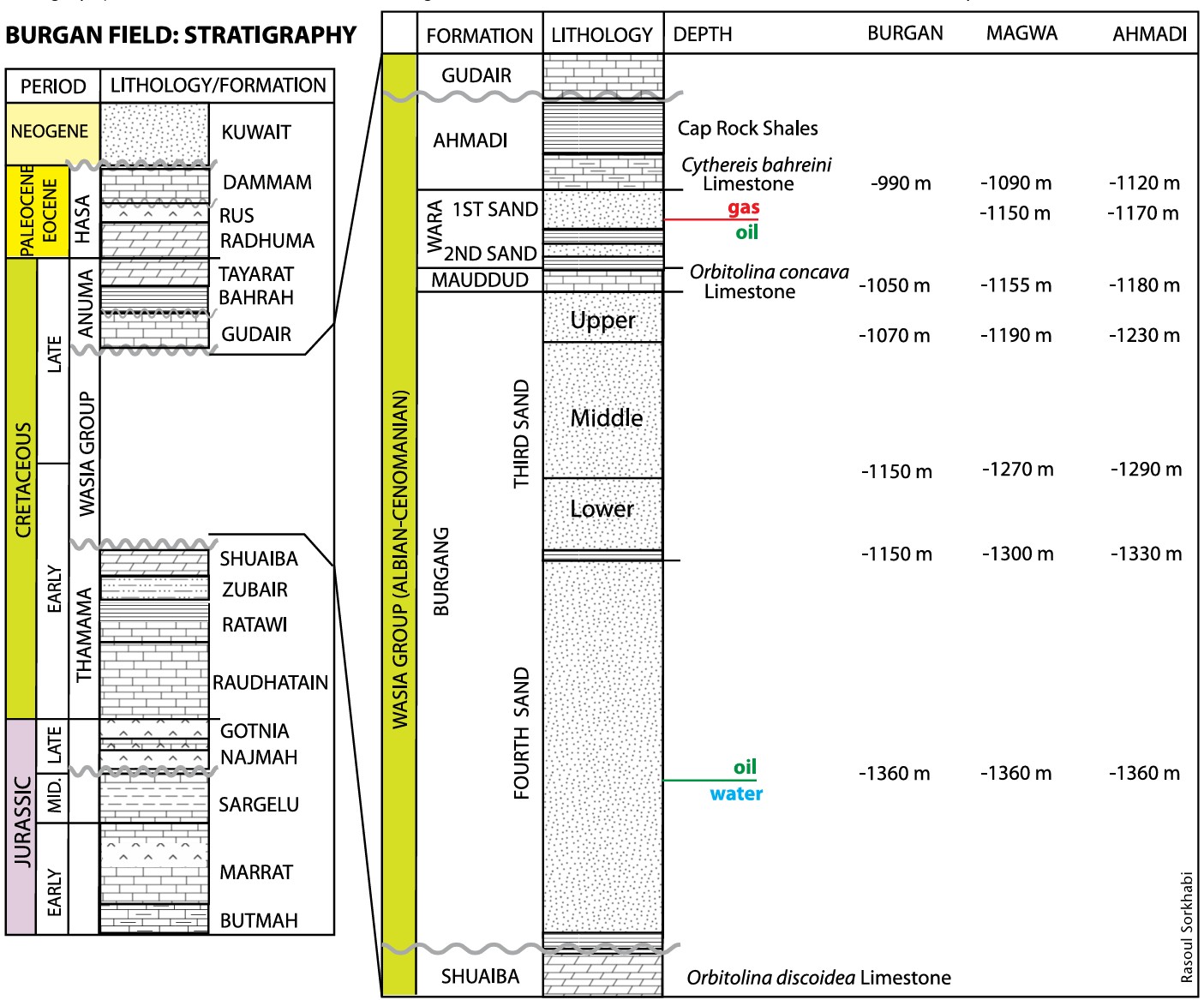
How much of Kuwait’s proven oil is in Burgan? According to the annual data published in the BP Statistical Review of World Energy, OPEC’s Annual Statistical Bulletin, and the Oil & Gas Journal, Kuwait’s proven oil reserves stand at 101.5 Bb (excluding the Partitioned Neutral Zone with proven oil reserves of about 5 Bb which Kuwait shares with Saudi Arabia on a 50-50 basis); this figure accounts for seven to eight percent of the world’s proven reserves. Assuming Burgan’s recoverable oil to be 70 Bb, it seems that this supergiant field holds about 70% of Kuwait’s proven oil.
Production data from Burgan, even when they are known, cannot be taken at face value to assess the life span of the Burgan field because the production is subjected to not only geological storage but also reservoir management and political-economic considerations. The maximum production from Burgan was 2.2 to 2.4 MMbopd during 1970-73 (with 1972 standing at 2,415,068 bopd). The field’s production has declined since then, partly because of market considerations (for example, the production was between 0.5 to 1.0 MMbopd during 1980-86) and partly because of optimal reservoir management practices. In a 2005 interview, Faroul al-Zanki, chairman of state-owned Kuwait Oil Company, was reported as saying; “[To boost oil supply] Burgan itself won’t be enough because we have exhausted that, with its production capacity now much lower than what it used to be. We tried 2 million barrels a day, we tried 1.9 million, but 1.7 million is the optimum rate for the facilities and for the economy.” (Bloomberg, 10 November 2005). In 2010, Sami Rushaid, Chief Executive of Kuwait Oil Company, remarked that Burgan produced half of Kuwait’s oil (Upstream, 28 June 2010). Kuwait’s oil production from 2000 to 2010 varied between 2.0-2.8 MMbopd; in 2010, the production was 2.5 MMbopd, including about 200,000 barrels of noncrude liquids. According to the 2011 country briefing on Kuwait by the US Energy Information Administration, Burgan’s recent production is between 1.1 and 1.3 MMbopd, about half of Kuwait’s total production; but the field has a production capacity of 1.75 MMbopd.
Past and Future
Thanks to the rich oil endowments of Burgan and other fields, Kuwait, one of the smaller and less populous countries, is now one of the high-income economies in the world. Burgan has been pumping oil for 65 years or so, and like any other oil field, be it large or small, it will eventually be abandoned, but that day will probably be several decades hence. The Cretaceous play in Burgan is still a supergiant field. And with the application of improved recovery techniques, more of the oil in place can be produced. Moreover, the deeper Lower Cretaceous (Thamama Group) and Jurassic oil and Permian (Khuf) gas plays, which are proven and rich productive horizons in the Persian Gulf region, are yet to be rigorously explored in the Great Burgan fiel

